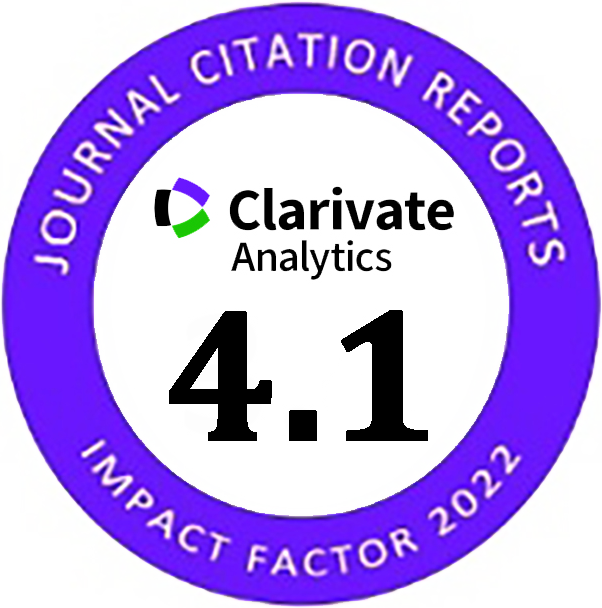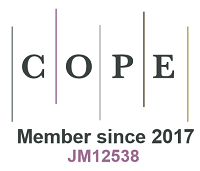Modification of Classical Horseshoe Spillways: Experimental Study and Design Optimization
Abstract
Investigation of the hydraulic aspects of spillways is one of the important issues regarding hydraulic structures. This study presents a modified horseshoe spillway (MHS) constructed by adding a flow passage and an internal weir in the bed of a classical horseshoe spillway (CHS). This modification increased the discharge efficiency and eliminated the rooster-tail hydraulic jump in CHSs. Eighteen laboratory-scale MHSs in various geometric sizes, six various CHSs, and a rectangular weir of the same width were constructed and tested under the same flow conditions. Results showed that in terms of discharge efficiency and water head reduction, CHSs and MHSs were superior to the rectangular weir. Compared to CHSs, the increased discharge flowrate in MHSs due to the internal weirs could further reduce the water head and thus increased their overall efficiencies. Design parameters effecting spillways’ discharge efficiencies were investigated based on dimensional analysis. The internal to external weir length ratio in MHSs was found to be a key design factor. To determine the optimal geometric design of CHS and MHS models, cubic polynomial models considering dimensionless parameters and their interactions were fitted to the experimental results. The cubic models revealed that higher discharge efficiencies in MHSs tended to occur at relatively low water heads and high internal to external weir lengths ratios.
Keywords
References
U. S. Bureau of Reclamation, Design of small dams, 1987. https://www.usbr.gov/tsc/techreferences/mands/mands-pdfs/SmallDams.pdf.
Falvey, Henry T. “Hydraulic Design of Labyrinth Weirs” (November 18, 2002). doi:10.1061/9780784406311.
Dabling, M. R., and B. P. Tullis. “Labyrinth Weirs with Angled Approach Flow.” Journal of Hydraulic Engineering 144, no. 12 (December 2018): 06018014. doi:10.1061/(asce)hy.1943-7900.0001544.
Vischer, Daniel L., and Willi H. Hager. "Dam hydraulics." John Wiley & Sons, Chichester, West Sussex PO 19 1 UD(UK). 316 (1998): 316.
Carollo, Francesco Giuseppe, Vito Ferro, and Vincenzo Pampalone. “Testing the Outflow Process over a Triangular Labyrinth Weir.” Journal of Irrigation and Drainage Engineering 143, no. 8 (August 2017): 06017007. doi:10.1061/(asce)ir.1943-4774.0001198.
Khatsuria, R. M. “Hydraulics of Spillways and Energy Dissipators” (October 27, 2004). doi:10.1201/9780203996980.
Mays, Larry W., ed. Hydraulic design handbook. McGraw-Hill Professional Publishing, 1999.
Tullis, Blake P., J. Chandler Young, and M. A. Chandler. "Head-discharge relationships for submerged labyrinth weirs." Journal of Hydraulic Engineering 133, no. 3 (2007): 248-254. doi:10.1061/(ASCE)0733-9429(2007)133:3(248).
B.M. Crookston, “Labyrinth weirs.” Utah State University, 2010.
Crookston, B. M., and B. P. Tullis. “Arced Labyrinth Weirs.” Journal of Hydraulic Engineering 138, no. 6 (June 2012): 555–562. doi:10.1061/(asce)hy.1943-7900.0000553.
Seamons, Tyler Robert. "Labyrinth weirs: A look into geometric variation and its effect on efficiency and design method predictions." (2014).
Kaya, Nihat, M. Emin Emiroglu, and Hayrullah Agaccioglu. “Discharge Coefficient of a Semi-Elliptical Side Weir in Subcritical Flow.” Flow Measurement and Instrumentation 22, no. 1 (March 2011): 25–32. doi:10.1016/j.flowmeasinst.2010.11.002.
Tiwari, Harinarayan, and Nayan Sharma. “Developments to Improve Hydraulic Competence of Spillways.” Aquatic Procedia 4 (2015): 841–846. doi:10.1016/j.aqpro.2015.02.105.
Lapotre, Mathieu G. A., and Michael P. Lamb. “Hydraulics of Floods Upstream of Horseshoe Canyons and Waterfalls.” Journal of Geophysical Research: Earth Surface 120, no. 7 (July 2015): 1227–1250. doi:10.1002/2014jf003412.
Akan, A. Osman. “Hydraulic Structures.” Open Channel Hydraulics (2006): 200–265. doi:10.1016/b978-075066857-6/50007-2.
Marriott, Martin. Nalluri and Featherstone's, “Civil Engineering Hydraulics: Essential Theory with Worked Examples.”, John Wiley & Sons, 2016.
Hong, Seung Ho, Terry W. Sturm, and Juan A. González-Castro. “Transitional Flow at Low-Head Ogee Spillway.” Journal of Hydraulic Engineering 144, no. 2 (February 2018): 04017062. doi:10.1061/(asce)hy.1943-7900.0001398.
Leite Ribeiro, M., M. Bieri, J.-L. Boillat, A. J. Schleiss, G. Singhal, and N. Sharma. “Discharge Capacity of Piano Key Weirs.” Journal of Hydraulic Engineering 138, no. 2 (February 2012): 199–203. doi:10.1061/(asce)hy.1943-7900.0000490.
Saadatnejadgharahassanlou, Hamid, Amin Gharehbaghi, Saeid Mehdizadeh, Birol Kaya, and Javad Behmanesh. “Experimental Investigation of Discharge Coefficient over Novel Kind of Sharp-Crested V-Notch Weir.” Flow Measurement and Instrumentation 54 (April 2017): 236–242. doi:10.1016/j.flowmeasinst.2017.02.008.
DOI: 10.28991/cej-2019-03091396
Refbacks
- There are currently no refbacks.
Copyright (c) 2019 Vahid Hassanzadeh Vayghan, Ali Saber, Soroosh Mortazavian

This work is licensed under a Creative Commons Attribution 4.0 International License.






